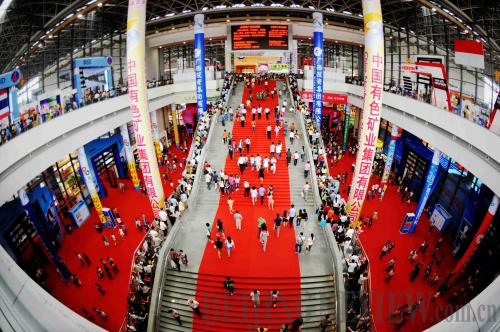|
 |
|
OPEN TO THE PUBLIC: Visitors enter the Nanning International Convention and Exhibition Center on September 6 (ZHANG AILIN) |
Imagine this: A free trade area spanning China to Japan, across to India down to New Zealand, a region covering a hulk of the Asia-Pacific, its diversity of nations, political systems, languages, religions and cultures. Given that China and the Association of Southeast Asian Nations (ASEAN), a 10-country economic bloc, already have a free trade agreement, expanding it further shouldn't seem so outlandish.
There has been mounting outcry from both China and ASEAN to upgrade the free trade area the two sides built in 2010, which covers one fourth of the world's population and is the largest among developing countries. A larger free trade bloc covering India, Japan, South Korea, Australia and New Zealand is also under discussion.
During his keynote speech at the 10th China-ASEAN Expo, Chinese Premier Li Keqiang pledged to double trade and two-way investment between China and ASEAN by 2020, and suggested the two should expand free trade agreements to cover more goods. The expo was held from September 3 to 6 in Nanning, capital of southwest China's Guangxi Zhuang Autonomous Region. Trade between China and ASEAN is expected to reach $1 trillion by 2020, compared with the $400 billion in 2012, Li said. Two-way investment will amount to $150 billion from 2013 to 2020. Li also called for renewing and expanding the free trade agreement by further lowering taxes, reducing no-tax barriers, launching a new round of talks over services and creating a more convenient platform for bilateral trade and investment.
This year marks the 10th anniversary of the China-ASEAN strategic partnership and the China-ASEAN Expo. The past decade has been described as a "golden decade," during which China and ASEAN saw bilateral trade increase fivefold and two-way investment expand threefold from 2003 to 2012. "Since China and ASEAN were able to build a golden decade of cooperation in the past 10 years, they are capable of turning the next 10 years into a diamond decade," Li said.
Regarding the South China Sea disputes between China and some Southeast Asian countries that have dominated news headlines, Li said those concerns were on the periphery of overall bilateral ties. "The Chinese side maintains that the South China Sea disputes are not an issue between China and ASEAN, and they should not and will not affect the overall China-ASEAN cooperation."
An urgent need
Xu Ningning, an expert on China-ASEAN trade, praised Chinese Premier Li's pledge, adding that both sides have a strong desire to expand economic ties. "This desire comes from soaring trade figures between China and ASEAN member states, and also from the global trend of regional economic integration," said Xu. "Both sides should open up their markets to a larger extent, including goods, services and investment markets. More convenience should be given to the trade of goods. On the flip side, there has been only a very limited opening-up for services trade and the investment market between two sides. There is a huge potential waiting to be tapped," said Xu.
|
